
GIGABYTE has been an early adopter of Gen 4 SSD technology and is now set to launch one of the first PCIe 5.0 SSDs in Taiwan. Boasting a reading speed of over 10,000 MB/s, this new NVME 2.0 drive features a Phison E26 control chip, 232-layer 3D TLC NAND flash memory, LPDDR4 memory cache, and an M.2 Thermal Guard XTREME heat sink with a nano-carbon coating to prevent overheating. The initial price for the 2TB AORUS Gen5 10000 is 11,900 yuan, which is only slightly more expensive than the Gen 4 version, making it an attractive option for gamers seeking ultimate performance.
It’s been only three years since the launch of PCIe 4.0 SSD, but it feels like a long time ago when netizens criticized it as being overpriced and useless. However, this year, the price of storage components has dropped significantly, making Gen 4 SSD more affordable. Moreover, the launch of Microsoft’s DirectStorage technology has made high-speed SSDs more useful. Although the price of Gen 5 SSD may seem high at its launch, it is expected to become an essential piece of equipment for enthusiasts soon enough.
AORUS Gen5 10000 SSD Specification
Interface: PCI-Express 5.0 x4, NVMe 2.0
Size: M.2 2280 Capacity:
1TB/2TB
Particle: 3D TLC NAND Flash
Cache: LPDDR4 2GB (1TB version)/ LPDDR4 4GB (2TB version)
sequential read Read: up to 9500MB/s (1TB version)/10000MB/s (2TB version)
Sequential write: up to 8500MB/s (1TB version)/9500MB/s (2TB version)
Dimensions (excluding heat sink): 80 x 22 x 2.3 mm
Dimensions (with heat sink): 92 x 23.5 x 44.7 mm
Mean Time Between Failures (MTBF): 1.6 million hours
Operating Power Consumption: Read: <10.5W ; Write: <11W
Standby Power Consumption: <85mW
Operating Temperature: 0 °C to 70°C
Storage temperature: -40°C to 85°C
Warranty: Five years or 700 TBW (1TB version)/1400 TBW (2TB version)
AORUS Gen5 10000 SSD 10,000 read/write performance x Nano carbon heat sink
The AORUS Gen5 10000 SSD uses the PCIe 5.0 x 4 specification, which provides a theoretical bandwidth of up to 15.75GB/s, twice as much as the previous generation. To take advantage of this performance, the SSD requires a motherboard that supports M.2 PCIe 5.0, such as INTEL Z690/Z790 or AMD X670E/B650. However, it is also backward compatible with PCIe 4.0 / 3.0 for users who don’t have the latest motherboard technology yet.
The AORUS Gen5 10000 SSD features the latest NVME 2.0 technology, which improves the efficiency of storage space utilization compared to the previous NVME 1.3 standard. For instance, it supports zoned namespaces (ZNS) that enable data partitioning based on usage frequency, which reduces write amplification and prolongs the SSD’s lifespan. Additionally, the key-value (KV) feature allows applications to communicate with the SSD using key-value pairs instead of block addresses, thereby reducing the CPU load.
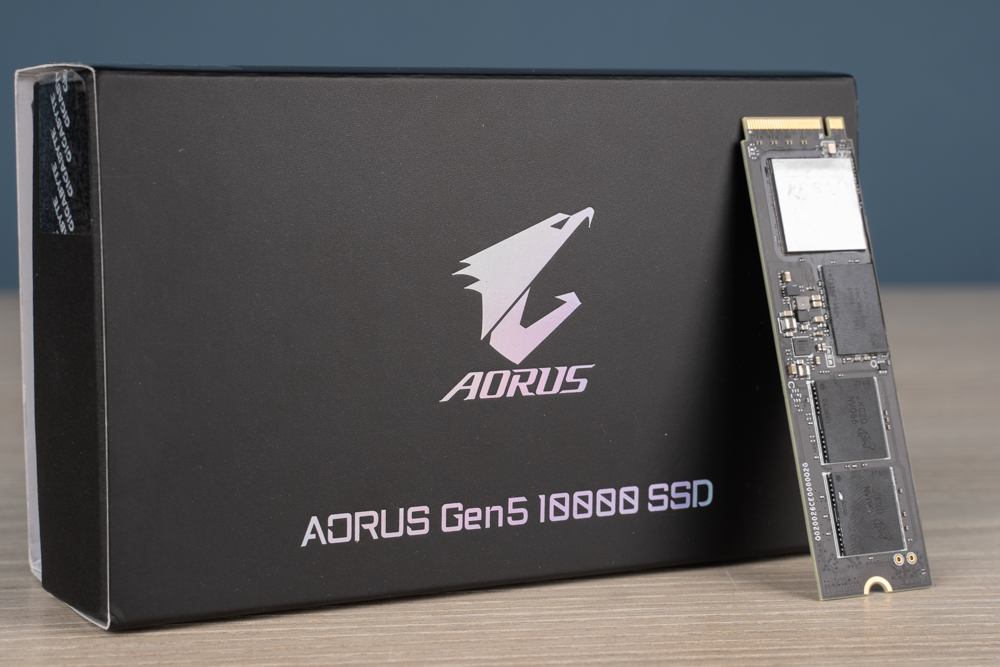
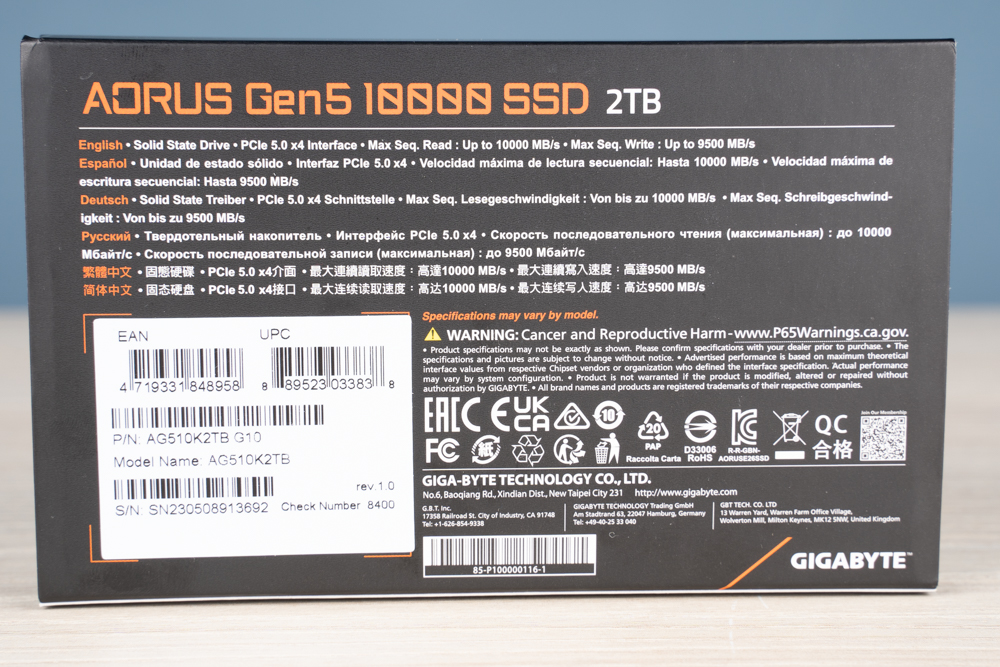
The SSD body and heat sink of the AORUS Gen5 10000 are separate, so users need to install them themselves or with an SSD heat sink provided by the motherboard. The copper heat sink is already attached to the SSD, and its presence won’t affect the temperature conduction of an external heat sink.
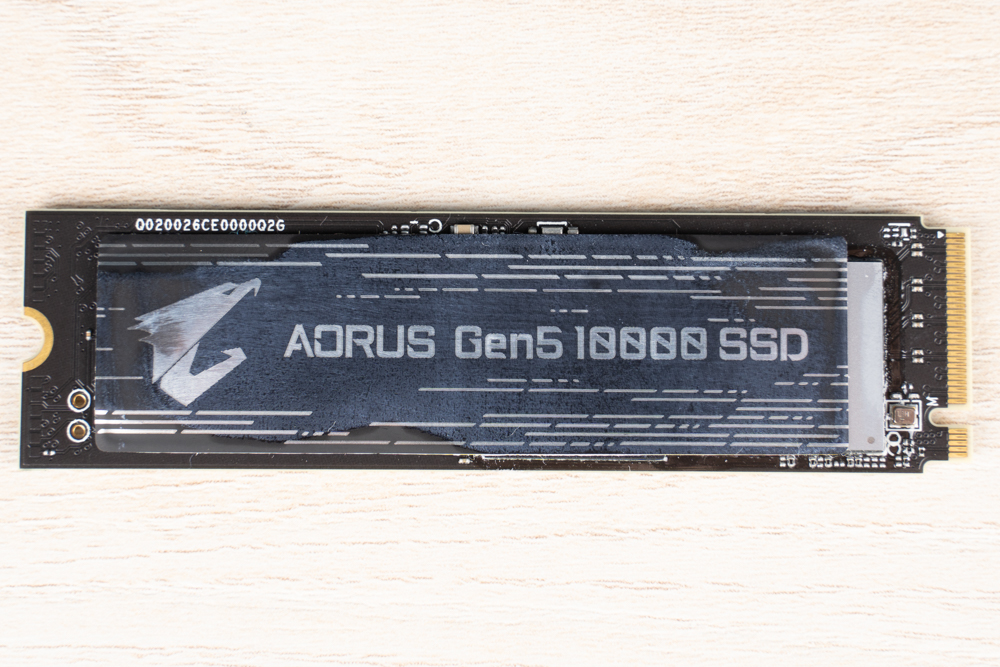
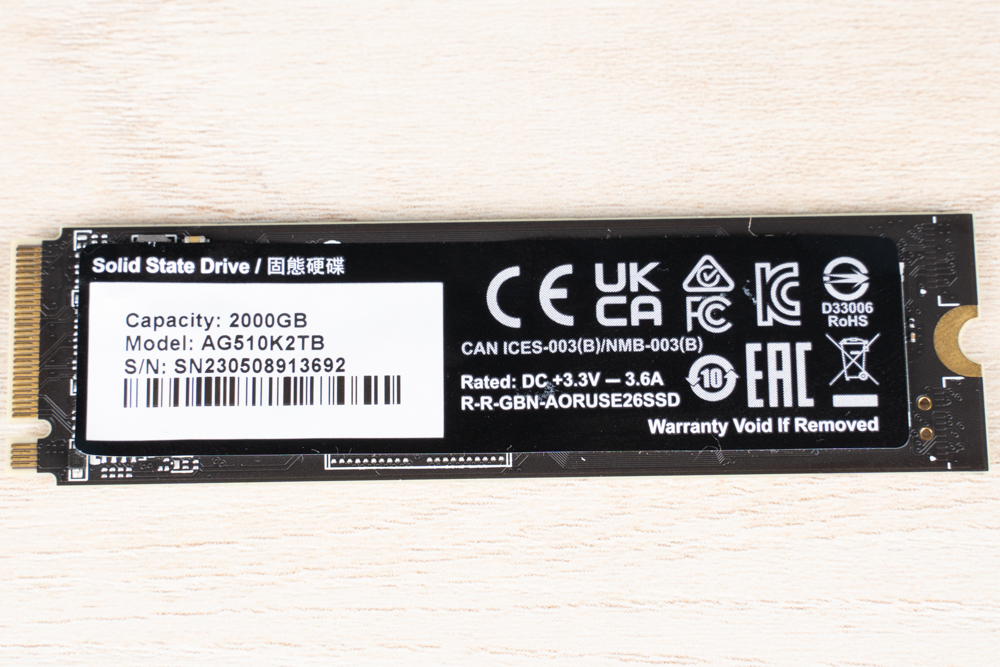
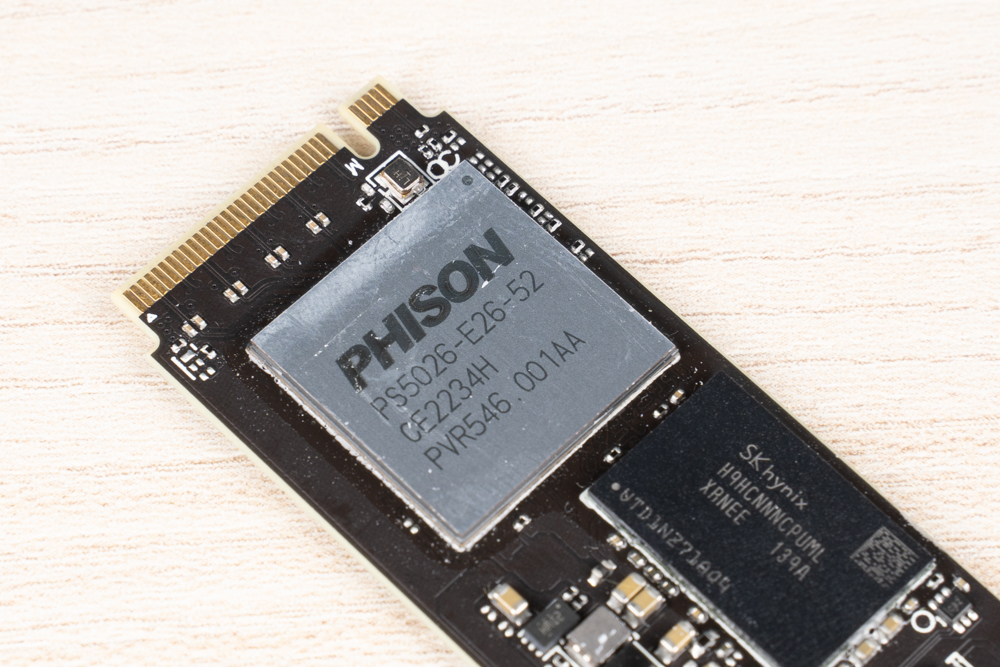
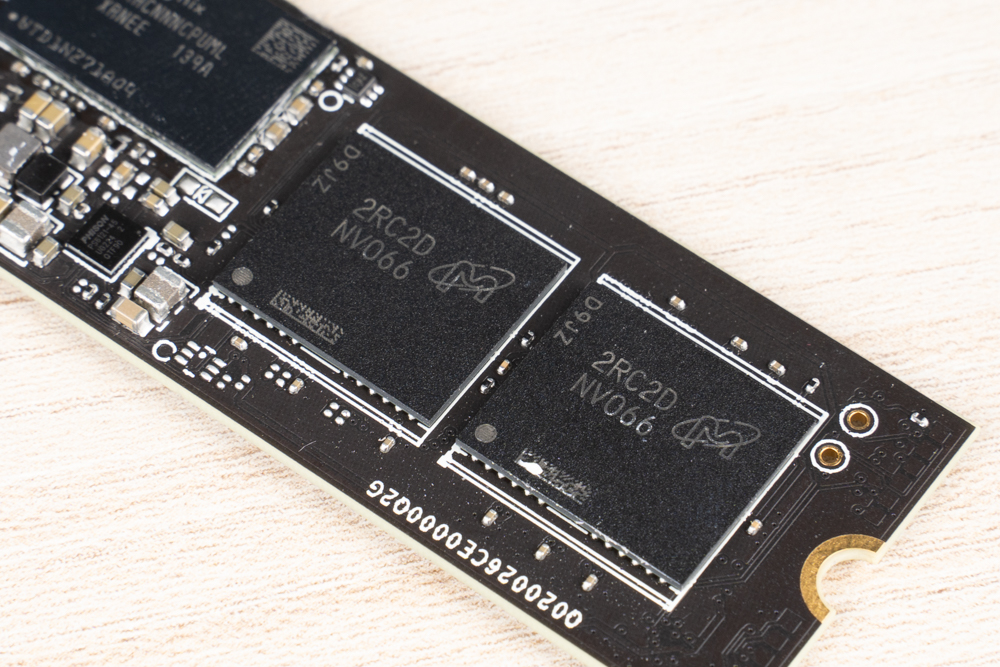
The AORUS Gen5 10000 SSD’s operating power consumption can reach as high as 10-11W, which is unprecedented and requires a large heat sink for efficient cooling. The SSD comes with an M.2 Thermal Guard XTREME that features two sets of heat pipes and stacked heat sink fins with nano-carbon coating technology for rapid heat dissipation. However, users should note that the large size of the heat sink may interfere with the installation of the motherboard, heat sink, or graphics card. Many motherboards now come equipped with M.2 heat sinks, and users should choose one with strong heat dissipation capabilities, such as heat pipes and fins.
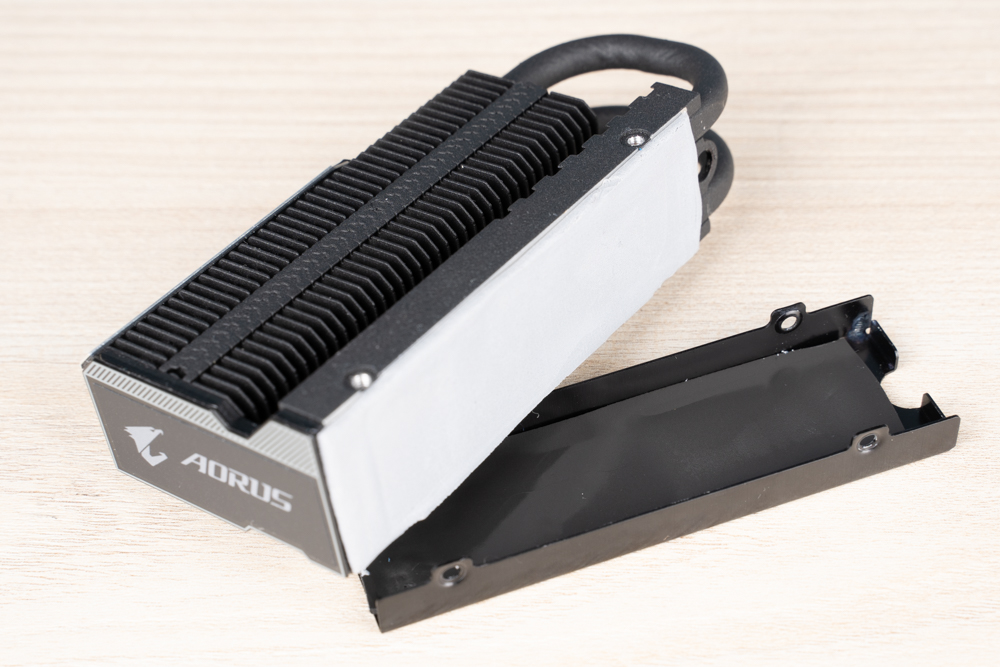
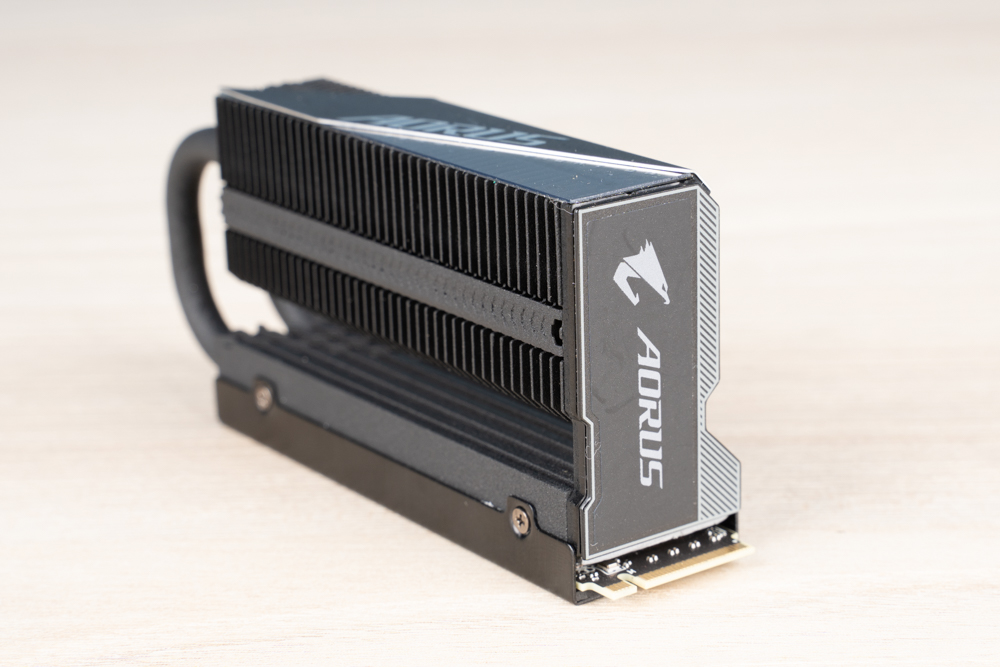
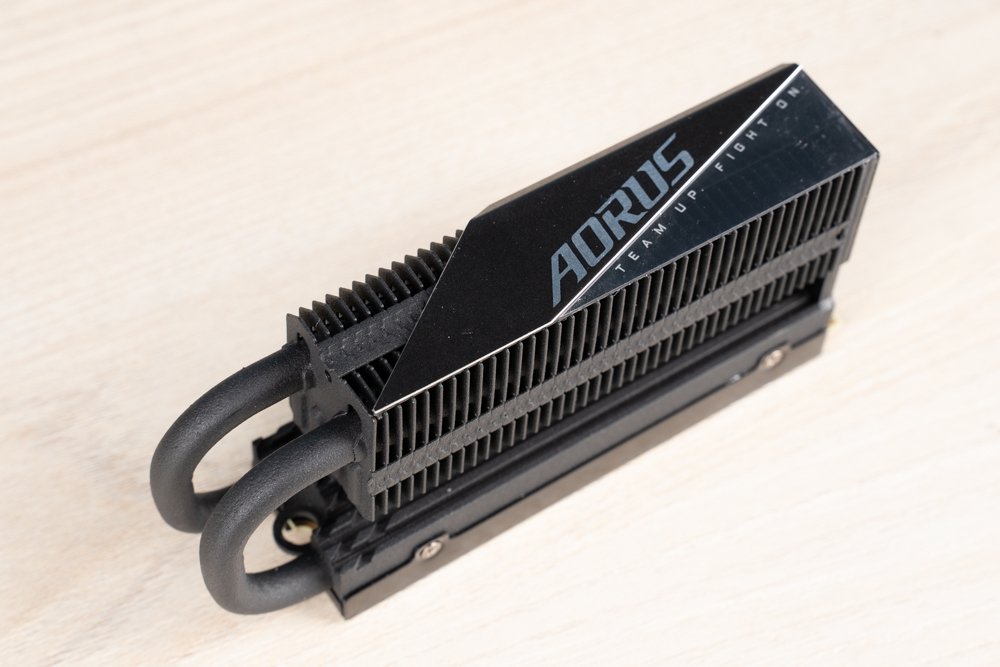
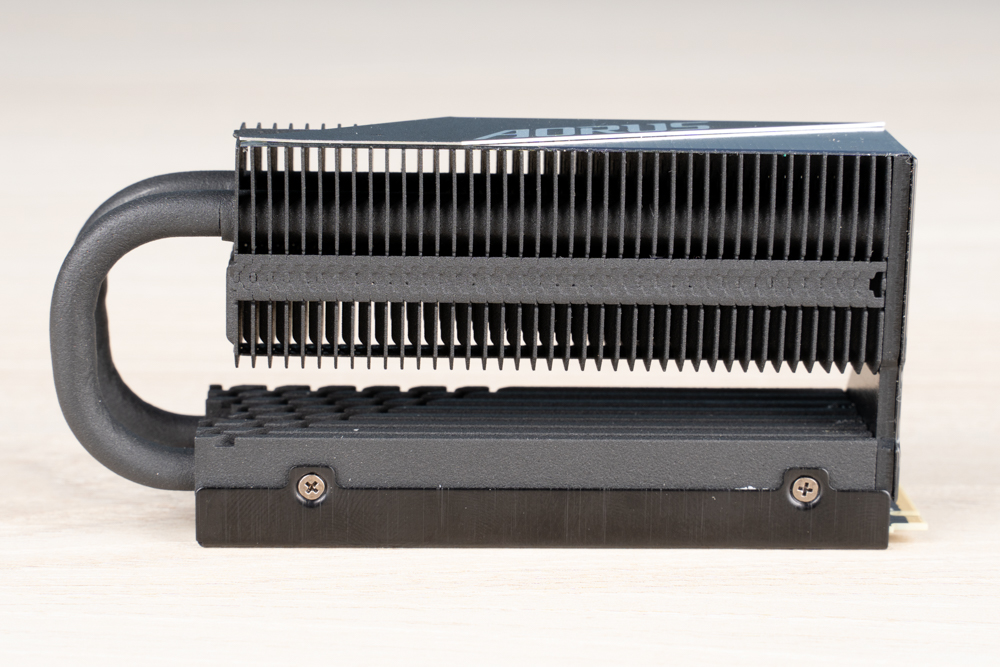
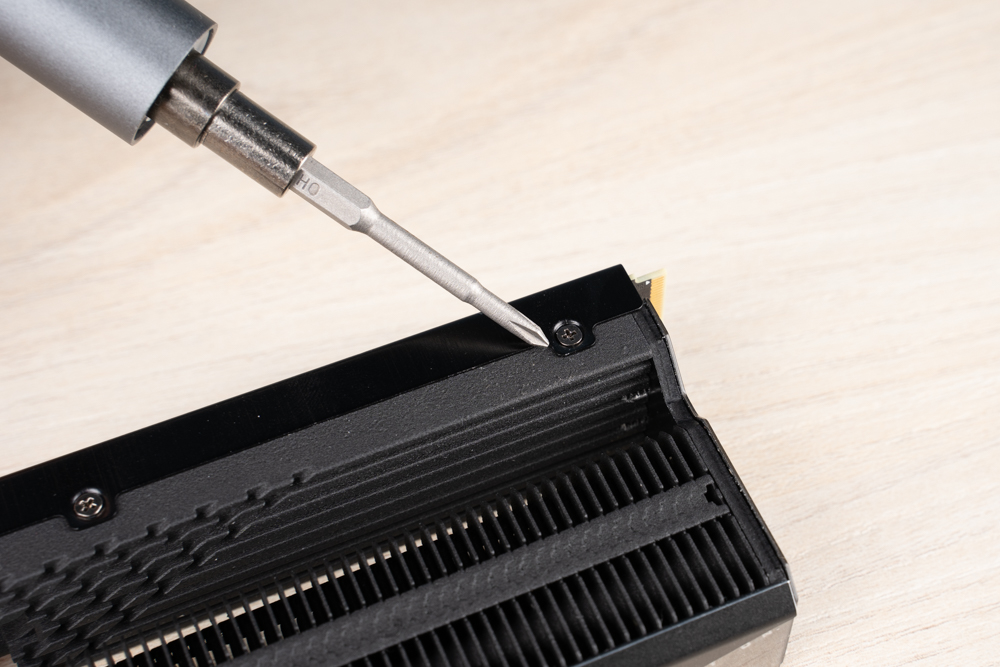
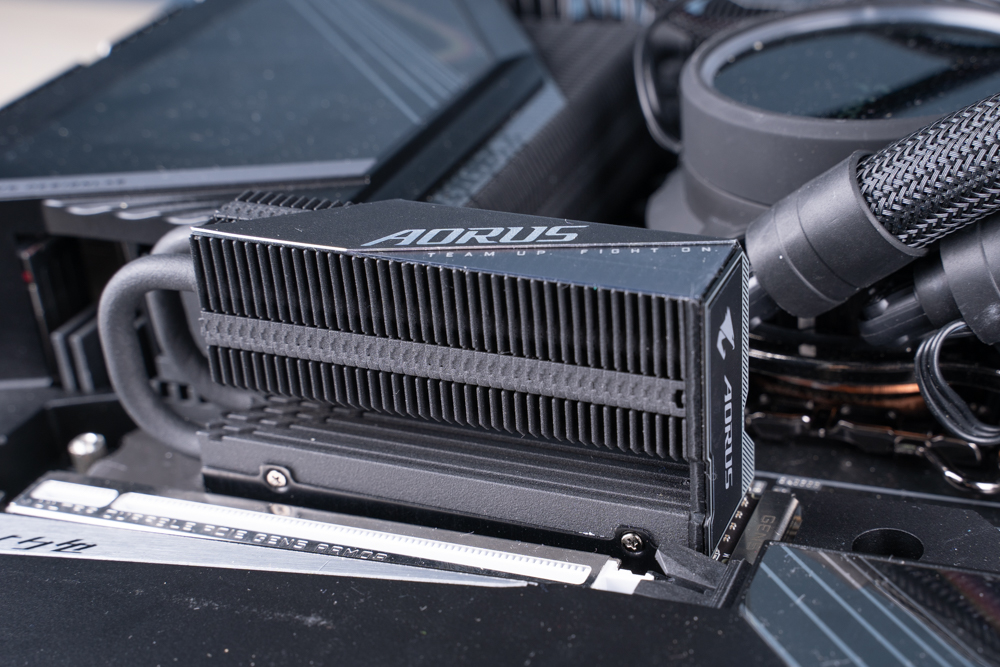
AORUS Gen5 10000 SSD 2TB Performance Measurement
In all tests, an Intel Core i7-13700K processor, a GIGABYTE Z790 AORUS XTREME motherboard, and Kingston DDR5-6000 16GB x 2 were used. The AORUS Gen5 10000 SSD 2TB was installed in the first M.2 slot of the motherboard, directly connected to the CPU’s PCIe 5.0 x4 channel, while the system was installed on another SSD. The included M.2 Thermal Guard XTREME heat sink was also installed.
Test Platform:
Processor: Intel Core i7-13700K
Motherboard: GIGABYTE Z790 AORUS XTREME
Memory: Kingston DDR5-6000 16GB*2
Display Card: NVIDIA GeForce RTX 3060 Ti
Power Supply: FSP Hydro Ti PRO 1000W
Operating System: Windows 11 The Pro 22H2
The CrystalDiskMark test was performed using an NVME SSD with a preset profile. The AORUS Gen5 10000 SSD achieved a sequential read speed of 10077MB/s and a sequential write speed of 10227MB/s. The random 4K read speed reached 94MB/s, while the write speed reached 418MB/s.
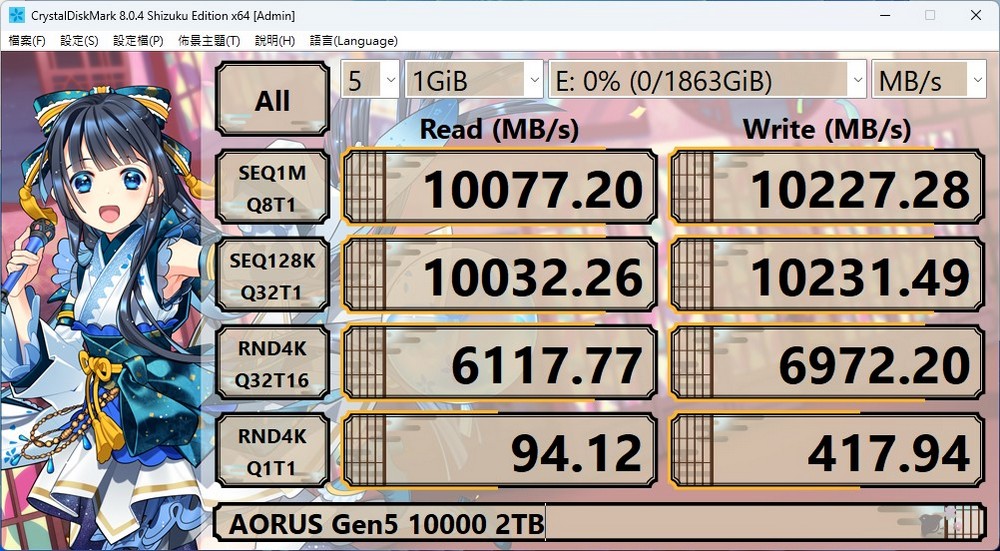
The ATTO Disk Benchmark test was used to measure the AORUS Gen5 10000 SSD’s maximum performance using different I/O sizes ranging from 512B to 64MB with a Direct I/O queue 8-layer test. The results showed that the SSD was able to achieve a maximum read speed of 9.4GB/s and a write speed of 9.5GB/s.
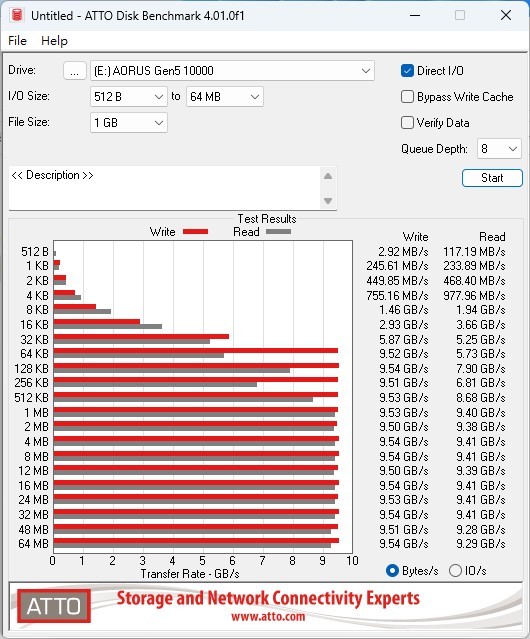
Microsoft’s DirectStorage technology only supports NVME SSDs, and users must have a compatible system and driver. To check if their hardware supports DirectStorage, players can open the Xbox GAME BAR by pressing WIN+G and navigate to Settings>Game Function interface.
DirectStorage technology enables the GPU to access the SSD directly, bypassing the CPU, which significantly improves game loading speed and reduces CPU usage. Microsoft’s Bulk Load Demo showed that it only takes 0.36 seconds to read 4.3GB of model data, with a bandwidth speed of up to 11.93GB/s.
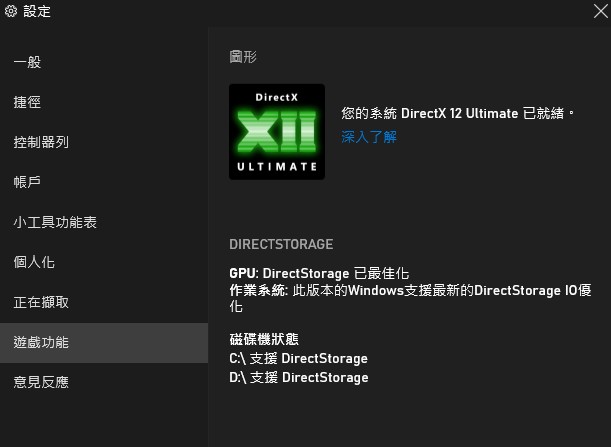
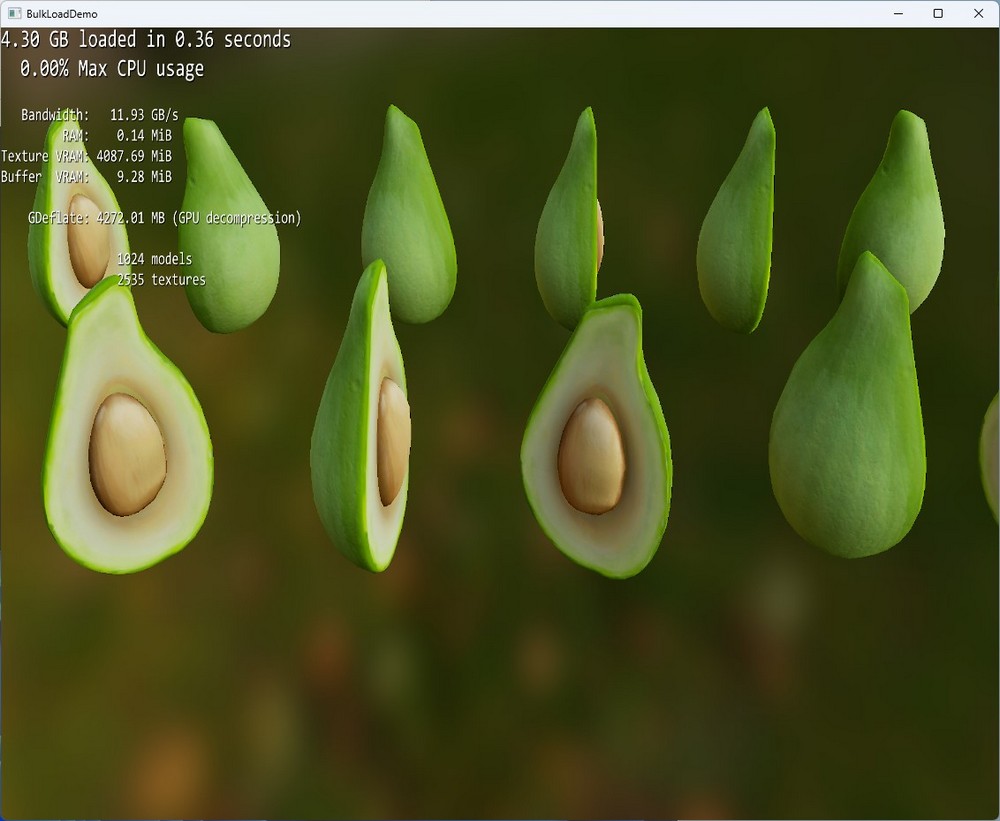
The AIDA64 full disk read and write test involves reading and writing a large number of files until the disk is full to observe the SSD’s read and write stability and whether it overheats and slows down. During the test, the AORUS Gen5 10000 maintained a speed of 7400MB/s throughout the read process, while the write speed remained above 9700MB/s in the beginning and dropped to about 2000MB/s after exceeding 630GB. In general, users can enjoy ultra-fast transmission speed as long as they don’t write files exceeding 630GB at one time.
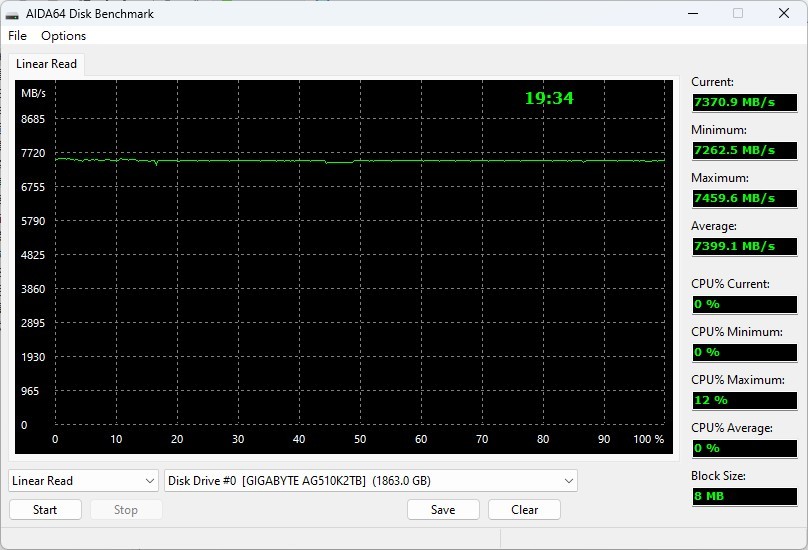
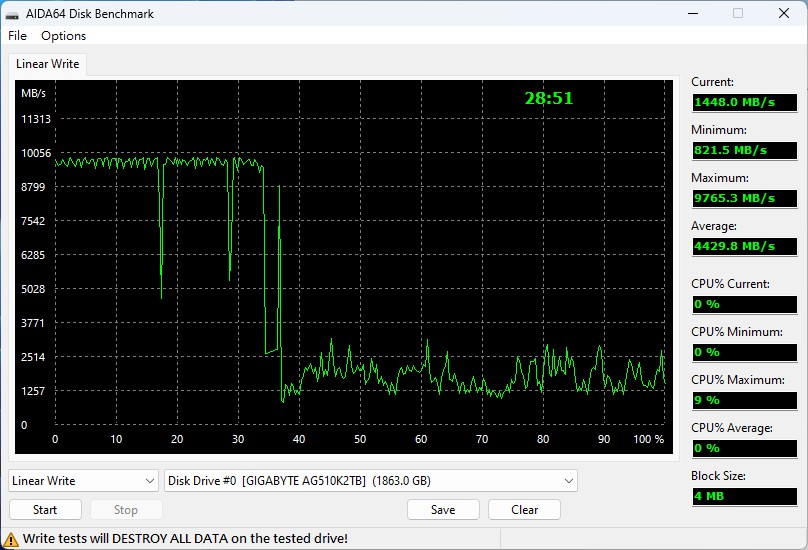
The PCMARK10 Full System Drive Benchmark is a comprehensive office performance test that simulates 23 daily storage tasks, including startup, Adobe program startup, Office software operation, and file copying. The results are presented using total scores, as well as average bandwidth, access time, and other data. In this test, the AORUS Gen5 10000 SSD achieved a score of 5709, with an average bandwidth of 902MB/s and an average access time of only 29 microseconds.
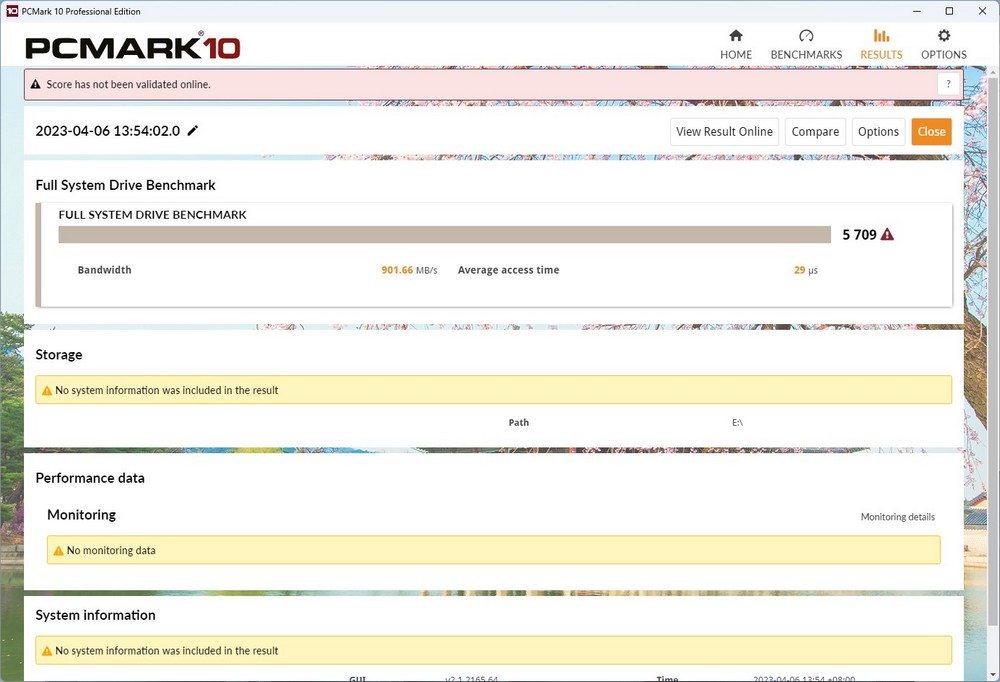
The 3DMARK Storage Benchmark is a test that simulates various operations such as game opening, recording, installation, archiving, and moving to evaluate storage devices. It provides various bandwidth and access time metrics. In this test, the AORUS Gen5 10000 SSD scored 5609, with an average bandwidth of 960MB/s and an average access time of 32 microseconds.
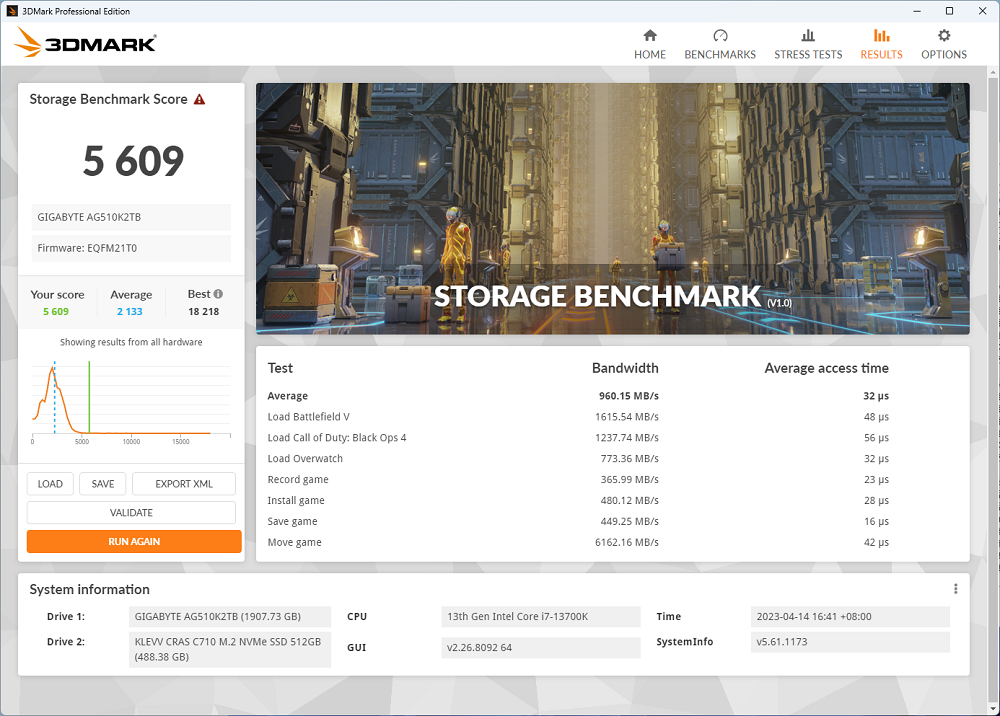
The temperature performance of the AORUS Gen5 10000 SSD was tested using CrystalDiskMark with the M.2 Thermal Guard XTREME heat sink and an open platform. HWiNFO64 showed a maximum temperature of 62 degrees and an average temperature of 49 degrees.

Summary
The AORUS Gen5 10000 SSD boasts an impressive sequential read and write speed of 10000MB/s, which is approximately 30% higher than the top PCIe 4.0 SSD’s 7000MB/s. Although this speed increase may not be noticeable in daily use, the more efficient NVME 2.0 standard is silently operating, which not only improves performance but also increases the lifespan of the SSD.
GIGABYTE provides a five-year warranty or 700TBW (1TB version) / 1400 TBW (2TB version) total writing capacity for the AORUS Gen5 10000 SSD. For instance, the 2TB version can write approximately 760GB per day on average, which is more than enough for ordinary players.
The AORUS Gen5 10000 SSD 2TB is equipped with a Phison E26 control chip, an LPDDR4 cache, Micron 232-layer TLC 3N NAND, and comes with an M.2 Thermal Guard XTREME heat sink. Its current price is 11,990 yuan, which is still reasonable compared to the prices of top SSDs in the past. After all, the best products tend to be the most expensive.
If this article is helpful for you, please share this article with your friends on social media. Thank you!
This article is based on the personality of the reviews. You are responsible for fact-checking if the contents are not facts or accurate.
Title: An unboxing test of the new generation AORUS Gen5 10000 PCIe 5.0 SSD has surpassed 10,000 reads